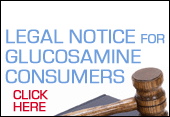 |
 |

Brought to you by the makers of Synflex ®
Over 1 million bottles sold!
America's most trusted brand
|
| FATTY RUBBISH AND FILTH IN FLOUR |
| Last review: 08/12/10 Margie - "The Arthritis Lady" |
"FATTY RUBBISH AND FILTH IN FLOUR"
http://www.newmediaexplorer.org/chris/2003/07/25/fatty_rubbish_and_filth_in_flour.htm
Doug Kaufmann is author of the book The Germ that Causes Cancer : http://www.amazon.com/exec/obidos/tg/detail/-/0970341814/qid=1083093890/sr=1-1/ref=sr_1_1/104-0848672-5510327?v=glance&s=books . In it, he explains the much understated problem of the contamination of our industrially stored grains by potent moulds, fungi and their associated mycotoxin discharges and why they should be strictly avoided.
Most governments only scan for the most dangerous of these, like aflatoxin: http://lookup.atomica.com/gurunet/query?cid=180217560 , thought to be one of the most carcinogenic substances on earth. One study showed that, via a typically grain-predominant diet, a citizen could expect to ingest from 0.15 g to 0.5 g of aflatoxin per day.
Antibiotics are often made from mycotoxins (viz. penicillin) and are well known for disrupting the delicate gut flora balance : http://www.newmediaexplorer.org/chris/2003/09/18/cultured_cabbage_juice_make_the_best_lactobacteria.htm, creating dysbiosis : http://www.dysbiosis.com/. For many patients with cancer, the fungal problems will be obvious, many of these sufferers with a history of antibiotic use prior to being diagnosed with cancer. Dr Joseph Mercola states:
"Mycotoxins cause a wide range of health problems in humans when we are exposed to small amounts over an extended period of time, and can even be lethal if taken in large quantities over a short period of time. Given the large number of diseases linked to mycotoxins, and our tendency to eat a large amount of grains in our typical [Western] diet, this is a very concerning problem. As Dr Holland states, grains are sources of carbohydrates, or sugars, and as such, they risk contamination by certain fungi. These fungi produce secondary metabolites, or mycotoxins."
Historically, grains have produced some quite wild reactions, such as in Salem, Massachusetts in 1692, when 13 women and six men were executed for witchcraft after some citizens in the town went 'barking mad', probably due to poisoning by the rye fungus, ergot (St Anthony's Fire). LSD was first synthesized by Swiss chemist Albert Hoffman of Sandoz Laboratories in 1938, who was studying the hallucinogenic properties of ergot. Hoffman's revolutionary new kaleidoscopic trip was to skew the perceptions of an entire generation to come in the swinging sixties and beyond.
To illustrate the difficulties grains are causing humans, Dr David Holland elaborates on the top ten mycotoxin foods society routinely munches with alacrity with little or no appreciation for the cumulative downside:
1. Alcoholic beverages
Alcohol is the mycotoxin of the Saccharomyces yeast - brewer's yeast. Other mycotoxins besides alcohol can also be introduced into these beverages through the use of mold-contaminated grains and fruits. Producers often use grains that are too contaminated with fungi and mycotoxins to be used for table foods, so the risk is higher that you are consuming more than just alcohol in your beverage (Council for Agricultural Science and technology. Mycotoxins: Economic and Health Risks. Task Force Report Number 116. CAST. Ames, IA. Nov 1989). Before you drink for the health of your heart, consider the other possible risks of drinking. There are safer ways of consuming antioxidants.
2. Corn
Corn is "universally contaminated" with fumonisin and other fungal toxins such as aflatoxin, zearalenone and ochratoxin (Council for Agricultural Science and Technology. Mycotoxins: Risks in Plant, Animal and Human Systems. Task Force Report No. 139. Ames, IA. Jan 2003).
Fumonisin and aflatoxin are known for their cancer-causing effects, while zearalenone and ochratoxin cause estrogenic : http://website.lineone.net/~mwarhurst/ and kidney-related problems respectively. Just as corn is universally contaminated with mycotoxins, our food supply seems to be universally contaminated with corn -- it's everywhere! A typical chicken nugget at a fast food restaurant consists of a nugget of corn-fed chicken that is covered by a corn-based batter that is sweetened with corn syrup!
3. Wheat
Not only is wheat often contaminated with mycotoxins, but so are the products made from wheat, like breads, cereals, pasta, etc. Pasta may be the least-"offensive" form of grains since certain water-soluble mycotoxins, such as deoxynivalenol (vomitoxin), are partially removed and discarded when you toss out the boiling water that you cooked the pasta in.
Unfortunately, traces of the more harmful, heat-stable and fat-soluble mycotoxins, such as aflatoxin, remain in the grain. Regarding breads -it probably doesn't matter if it's organic, inorganic, sprouted, blessed or not - if it came from a grain that has been stored for months in a silo, it stands the chance of being contaminated with fungi and mycotoxins.
4. Barley
Similar to other grains that can be damaged by drought, floods and harvesting and storage processes, barley is equally susceptible to contamination by mycotoxin-producing fungi. Barley is used in the production of various cereals and alcoholic beverages.
5. Sugar (sugar cane and sugar beets)
Not only are sugar cane and sugar beets often contaminated with fungi and their associated fungi, but they, like the other grains, fuel the growth of fungi. Fungi need carbohydrates - sugars - to thrive.
6. Sorghum
Sorghum is used in a variety of grain-based products intended for both humans and animals. It is also used in the production of alcoholic beverages.
7. Peanuts
A 1993 study demonstrated 24 different types of fungi that colonized the inside of the peanuts used in the report (Costantini, A. Etiology and Prevention of Atherosclerosis. Fungalbionics Series.1998/99). And this was after the exterior of the peanut was sterilized!
So, when you choose to eat peanuts, not only are you potentially eating these molds, but also their mycotoxins. Incidentally, in the same study the examiners found 23 different fungi on the inside of corn kernels. That said, if you choose to plant your own garden in an attempt to avoid mycotoxin contamination of corn or peanuts, it does you no good if the seed (kernel) used to plant your garden is already riddled with mold.
8. Rye
The same goes for rye as for wheat and other grains. In addition, when we use wheat and rye to make bread, we add two other products that compound our fungal concerns: sugar and yeast!
9. Cottonseed
Cottonseed is typically found in the oil form (cottonseed oil), but is also used in the grain form for many animal foods. Many studies show that cottonseed is highly and often contaminated with mycotoxins.
10. Hard Cheeses
Here's a hint: if you see mold growing throughout your cheese, no matter what you paid for it, there's a pretty good chance that there's a mycotoxin not far from the mold. It is estimated that each fungus on Earth produces up to three different mycotoxins.
The total number of mycotoxins known to date numbers in the thousands. On the other hand, some cheeses, such as Gouda cheese, are made with yogurt-type cultures, like Lactobacillus, and not fungi (Costantini, 1998/99). These cheeses are a much healthier alternative, fungally speaking.
Naturally, with this list coming from a group that opposes eating food that is merely contaminated with fungi, we'd certainly oppose eating the fungus itself! That would include common table mushrooms and so-called myco-protein food products [quorn].
Other foods that could potentially make our list are rice, oats and beans, given that these too are sources of carbohydrates. And occasionally food inspectors will come across a batch of mold-contaminated rice or oats. However, all other things being equal, these crops are generally more resistant to fungal contamination (CAST 1989).
CONCLUSION
Grains break down into glucose in the body and fuel fungal growth. All nutritional regimens for cancer should therefore make a point of ostracizing these foods from the patient's diet. In the resources below, I give full dietary recommendations along with a comprehensive list of potent, natural anti-fungal materials that are being widely used against cancers today.
Further Resources
The ABC's of Disease by Phillip Day
Cancer: Why We're Still Dying to Know the Truth by Phillip Day : http://credence.org/page1.htm
B17 Metabolic Therapy compiled by Phillip Day :
Great News on Cancer in the 21st Century by Steve Ransom (http://credence.org/newbooktours/Great%20News!.htm)
Best Of Health
Margie – “The Arthritis Lady”
About the Author
Margie Garrison is the author of the best seller "I Cured My Arthritis You Can Too" and a Free Weekly Newsletter, "Amazing Secrets To Fantastic Health"
She is dedicated to helping you help yourself to a healthier life.
Contact Margie @ arthritislady@yoursuccesslinks.com
Subscribe to her Newsletter @ newletter@yoursuccesslinks.com
Visit her Web Page @ www.yoursuccesslinks.com
|
The author's statements have not been evaluated by the Food and Drug Administration and are not provided to diagnose any disease or to suggest that liquid glucosamine and chondroitin will treat, cure, or prevent any disease.

|
 |
|
 |






